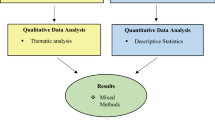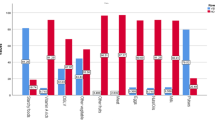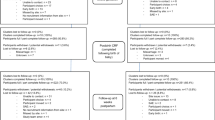Abstract
This study explores differences in body mass index (BMI), diet, and lifestyle between women of varying socio-economic status in Karnataka, India, using data from the National Family Health Survey 2 (n=4374), in-depth interviews (n=20) and six focus group discussions (n=40) completed in Bangalore. Predictors of overweight (BMI ≥25kg/m2) were modelled using logistic regression. A content analysis of the qualitative data was undertaken to understand behavioural factors affecting overweight. Prevalence of undernutrition was high for rural women (48%) and for overweight, prevalence was high in large urban areas (44%). In Bangalore knowledge of unhealthy foods was higher for richer women, although their diet and activity levels were less healthy than poorer women, who did not have the resources to purchase less healthy diets. Although some knowledge of the need for activity and healthy diets exists for wealthier Bangalore women, this does not translate into healthy behaviour, suggesting a need for obesity prevention programmes.
This is a preview of subscription content, access via your institution
Access options
Subscribe to this journal
Receive 12 print issues and online access
$259.00 per year
only $21.58 per issue
Buy this article
- Purchase on Springer Link
- Instant access to full article PDF
Prices may be subject to local taxes which are calculated during checkout
Similar content being viewed by others
References
Carraro R & Cebrian MG 2003: Role of prevention in the contention of the obesity epidemic. Eur. J. Clin. Nutr. 57 (Suppl 1), S94–S96.
Chief Medical Officer 2002: Health Check: on the State of Public Health. UK: Department of Health.
Fleck F 2003: WHO challenges food industry in report on diet and health. BMJ 326, 515.
Griffiths PL & Bentley ME 2001: The nutrition transition is underway in India. J. Nutr. 131, 2692–2700.
International Institute for Population Sciences 1995: Indian National Family Health Survey. Mumbai: International Institute of Population Sciences.
International Institute for Population Sciences & ORC Macro 2000a: National Family Health Survey India 1998/99. Mumbai: IIPS.
International Institute for Population Sciences & ORC Macro 2000b: National Family Health Survey India 1998/99: Andhra Pradesh. Mumbai: International Institute for Population Sciences.
International Institute for Population Sciences & ORC Macro 2001: National Family Health Survey India 1998/99: Karnataka. Mumbai: International Institute for Population Sciences.
Miles MB & Huberman AM 1994: Qualitative Data Analysis. Thousand Oaks, CA: Sage Publications.
Monteiro CA, D’ABenicio MH, Conde WL & Popkin BM 2000: Shifting obesity trends in Brazil. Eur. J. Clin. Nutr. 54, 342–346.
Office of the Registrar General 1991: 1991 Indian Census. New Delhi: Office of the Registrar General. (Table 2).
Office of the Registrar General 2001: 2001 Indian Census. New Delhi: Office of the Registrar General. (Table 2).
Patton MQ 1990: Qualitative Evaluation and Research Methods 2nd Edition. Newbury Park, CA: Sage Publications.
Perez-Cueto FJA & Kolsteren PWVJ 2004: Changes in the nutritional status of Bolivian women 1994–1998: demographic and social predictors. Eur. J. Clin. Nutr. 58, 660–666.
Peters JC, Wyatt HR, Donahoo WT & Hill JO 2002: From instinct to intellect: the challenge of maintaining healthy weight in the modern world. Obes. Rev. 3, 69–74.
QSR (1998–2000): NVIVO NUD*IST VIVO for Qualitative Research. Australia: QSR International Pty Ltd.
Reidpath DD, Burns C, Garrard J, Mahoney M & Townsend M 2002: An ecological study of the relationship between social and environmental determinants of obesity. Health Place 8, 141–145.
Saelens BE, Sallis JF, Black JB & Chen D 2003: Neighbourhood-based differences in physical activity: an environment scale evaluation. Am. J. Public Health 93, 1552–1558.
Singh RB, Beegom R, Mehta AS, Niaz MA, De AK, Mitra RK, Haque M, Verma SP, Dube GK, Siddiqui HM, Wanders GS, Janus ED, Postiglione A & Haque MS 1999: Social class, coronary risk factors and undernutrition, a double burden of diseases, in women during transition, in five Indian cities. Int. J. Cardiol. 69, 139–147.
Singh RB, Sharma JP, Rastogi V, Raghuvanshi M, Moshiri M, Verma SP & Janus ED 1997: Prevalence of coronary artery disease and coronary risk factors in rural and urban populations of North India. Eur. Heart J. 18, 1728–1735.
Steinbeck K 2002: Obesity: the science behind the management. Int. Med. J. 32, 237–241.
Acknowledgements
We thank our two local research assistants, Miss S. Navada and Miss N. Chitrakala. Additionally, we thank the Belaku Trust who helped to facilitate access to the study communities. We are grateful to Tom Swasey for his graphics assistance in redesigning the body silhouettes to be culturally appropriate for the Indian setting. We also thank Chenoa Flippen, who provided insightful discussants comments on an earlier draft of this paper presented at the 2002 Population Association of America meetings. Finally, we thank all the respondents who gave their time to be a part of this study.
Author information
Authors and Affiliations
Corresponding author
Additional information
Guarantor: P Griffiths.
Contributors: PG worked jointly on the conceptualization of the hypotheses to be examined in the paper, collected the qualitative data, contributed to the qualitative data analysis, undertook the statistical analysis of the NFHS data, and contributed to the writing of the manuscript. MB worked jointly on the conceptualization of the hypotheses to be examined in the paper, advised on the fieldwork, contributed to the qualitative data analysis, and contributed to the writing of the manuscript.
Sponsorship: Andrew. W. Mellon Foundation.
Rights and permissions
About this article
Cite this article
Griffiths, P., Bentley, M. Women of higher socio-economic status are more likely to be overweight in Karnataka, India. Eur J Clin Nutr 59, 1217–1220 (2005). https://doi.org/10.1038/sj.ejcn.1602228
Received:
Revised:
Accepted:
Published:
Issue Date:
DOI: https://doi.org/10.1038/sj.ejcn.1602228
Keywords
This article is cited by
-
Gender-specific determinants of overweight and obesity among older adults in India: evidence from a cross-sectional survey, 2017-18
BMC Public Health (2023)
-
Socio-demographic predictors of obesity among 12,975 adult ever married Egyptian women of reproductive age group: evidence from nationwide survey
BMC Public Health (2023)
-
Prevalence and determinants of nutritional status among women and children in Pakistan
BMC Public Health (2022)
-
Risk factors for overweight and obesity among women of reproductive age in Dar es Salaam, Tanzania
BMC Nutrition (2021)
-
Heterogeneity in adult anthropometry by socioeconomic factors: Indian National Family Health Survey 2006 and 2016
European Journal of Clinical Nutrition (2020)



